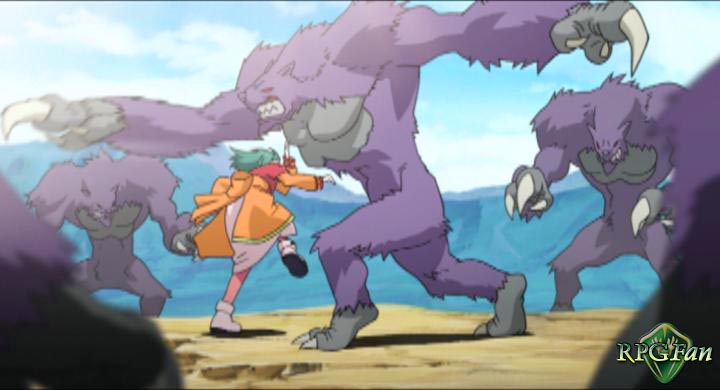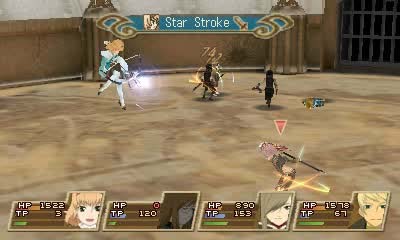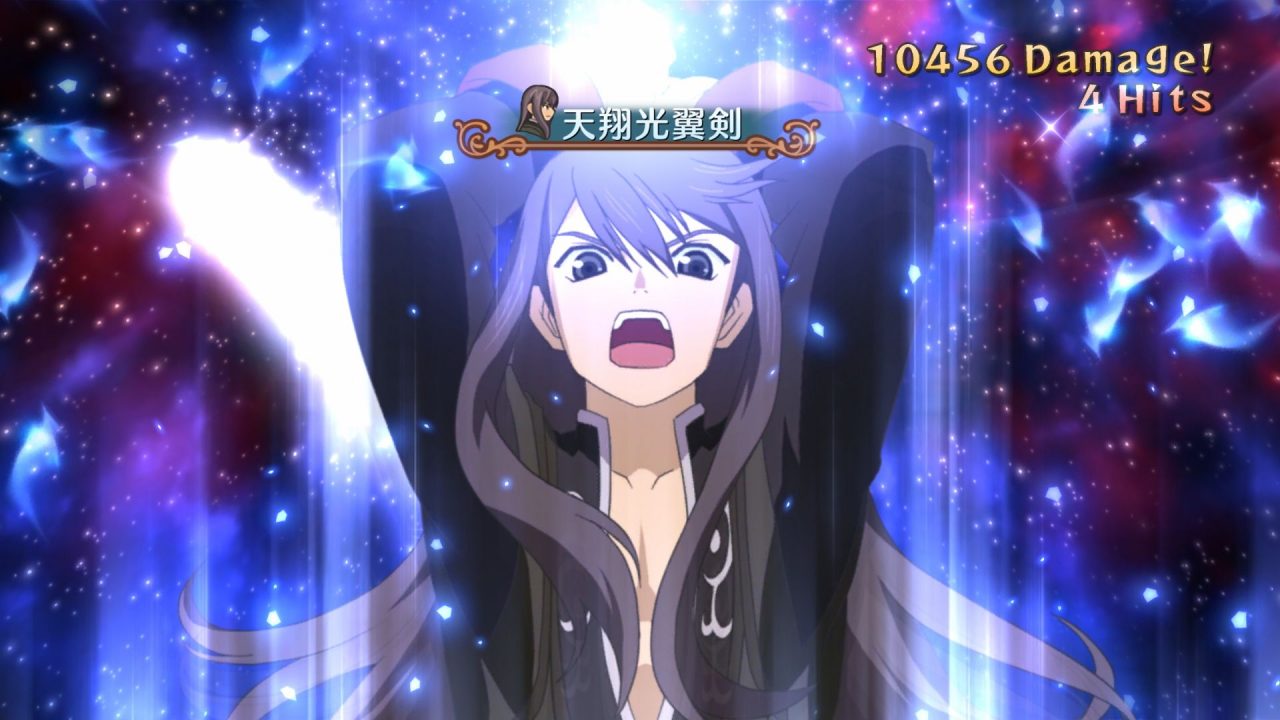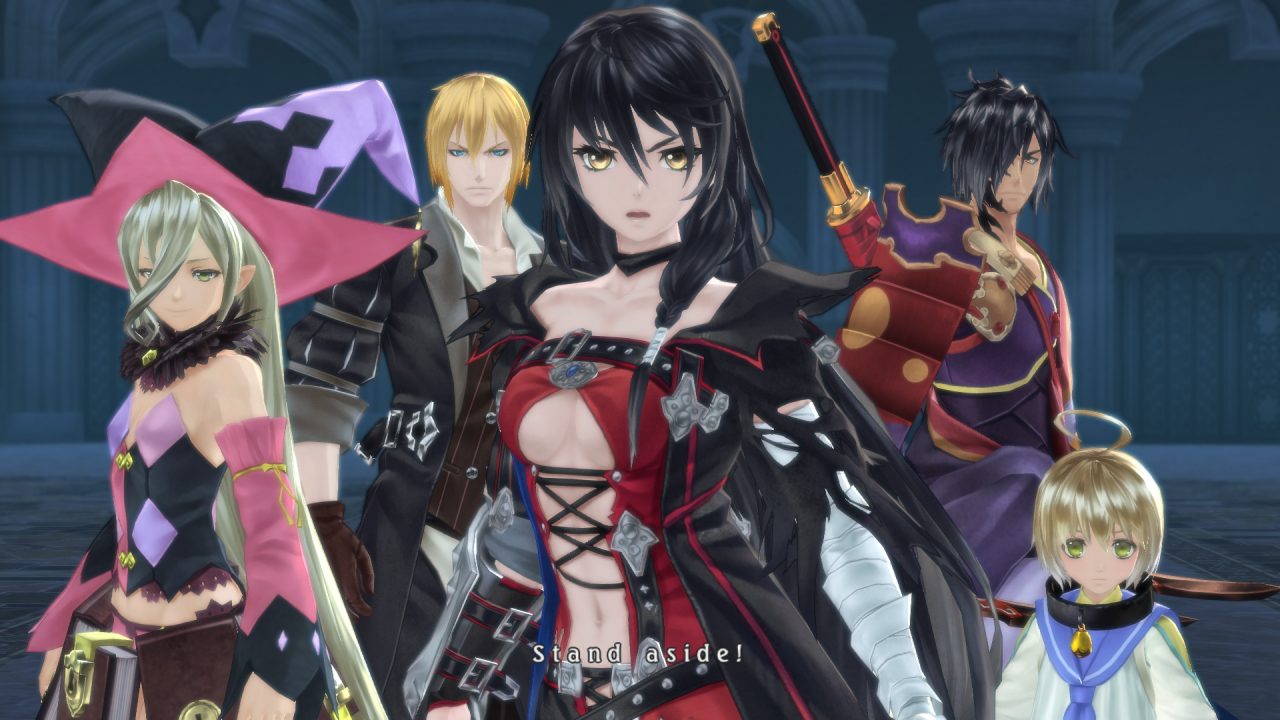The Tales series is the unsung hero of the JRPG genre. Less successful than Final Fantasy and Dragon Quest but with no less fervent a fandom, the Tales series represents the top of the B-tier and sets the bar for truly successful JRPGs. It represents technical excellence, fine polish, and resonant characters that, on the whole, make up many of the genre’s hallmarks. But as a series that debuted on the Super Famicom and has been going strong ever since, it can be hard to tell a Phantasia from a Vesperia. The series also has occasional (but infrequent) ties between games, making it exceedingly difficult to figure out exactly where to start.
Tales is a big, diverse series, and where you start can really impact your opinion of the franchise as a whole. That, coupled with the recent release of Tales of Arise, is why we’ve recruited writers across RPGFan’s staff to give the lowdown on every mainline entry that’s seen an official international release. This primer will provide recommendations for each era of the series, but we’ll also discuss what makes every other game good (or less than good) as an entry point. But before we get into the games, it helps to have an idea of precisely what defines a Tales game.
Intro by Wes Iliff
Tales Series 101
At a glance, a few things about the Tales series are obvious. The strong anime aesthetic and action battles are aspects featured in every trailer or review out there. But as with most series, there’s a lot more to it than that. While the Tales games look like extremely traditional JRPGs at first, their origins and evolution are anything but. From the first entry — Tales of Phantasia on the Super Famicom — the series pushed the limits of the genre with a fast-paced action battle system, voice acting, and even a full theme song, all of which would become staples for other beloved franchises to come.
A Tales game, at its best, takes fundamental JRPG expectations and slowly twists them, betraying expectations several times while still offering satisfying, straightforward high adventure. But that doesn’t really tell the whole tale (eh? eh?) of what makes the series stand out. Instead, it’s easier to break down some of the essential components of a great Tales title.
Action Combat
Tales might be the premier action JRPG series. The games mix the traditional JRPG structure of overworld maps dotted with towns, dungeons, and battles occurring on a separate field with fast-paced action that has evolved dramatically over the decades. In the beginning, battles were strictly 2D, side-view affairs focused on mixing basic attacks with special attacks governed by Technical Points (TP), the series magical resource. And with various types of characters to play as, this lent the games a sort of fighting game feel. The move to 3D spurred significant changes to the specifics of battle, from traditional MP alternatives to meaningful character interactions during combat. Still, the core has remained the same: fast-paced, reactionary battles with a varied cast.
But for some of us, the quality of the action is second to an even more rare gameplay element for a traditional JRPG: multiplayer. Almost every Tales game allows each active party member to be controlled in battle by either AI or another player. One player controls the action in the map and menus, but having a friend at your side can make higher difficulties all the more manageable when an enemy attacks. Seeing a group of friends connect to their favorite characters can make a cast all the more beloved, so the games feel like binging your favorite anime with your best friends.
Character Focus
The story often stands as a selling point for fans, but they’re rarely enticed by the plot alone: it’s the characters that carry the experience. A fan’s favorite Tales game is generally the game with their favorite cast. But it’s not the strength of the characters on their own that makes a Tales cast special. These characters usually exist on top of well-worn anime tropes, but the player’s preconceived notions are exploited throughout all of these games to tell a more surprising story. Sometimes the villains win, and the back half of the game is simply picking up the pieces. Other times the hero goes rogue and steers dangerously close to villain territory.
But undermined tropes aren’t the only tricks up the series’ sleeve. The characters find even more growth through their relationships with each other. Tales casts tend to form a found family dynamic, sharing experiences both grand, like saving the world, and more mundane, like sharing a meal. These are often presented through skits — voiced scenes that use the series’ iconic art. (Though Arise changes this by using in-engine rendering.) These optional scenes represent content that might not be core to the story but nonetheless flesh out the cast and often show the dynamics between party members, whether they’re teasing each other, reacting to events of the main game, or simply sharing more about themselves with their travel partners. Skits are the series’ secret weapon and an integral part of the Tales experience.
Killer Theme Songs
While beautiful animated intros with catchy Japanese pop songs are par for the course for RPGs today, Tales was a pioneer of this staple and their openings remain at the top of the game. Starting way back on the Super Famicom, the original release of Tales of Phantasia included a vocal track set to in-game footage (albeit with some sacrifices to sound quality to work with the hardware), and it’s been a tradition ever since. Hardcore Tales fans will have opinions about their favorite intros every bit as fervent as their opinions about their favorite cast. Even less beloved entries generated pre-launch excitement before their universally stellar opening animation was released. While these intros might seem like a minor touch, they color the perception of each entry and from the first moment a player opens the game. Few things generate buzz among Tales fans quite like unveiling a new intro.
by Wes Iliff
Starting Points by Era
Fast-paced combat, anime-charged casts, catchy tunes, alright, you’re on board! Unfortunately, you’re lost in a sea of jargon and made-up words, trying to determine whether Tales of Legendia is in any way connected to Tales of Berseria or if Tales of Destiny is a black sheep because “destiny” is an actual word. The good news is that the series is primarily standalone stories with only a handful of direct sequels or loose lore ties between specific games, making it an easy series to pick up at any point. The bad news is that there are just so many entries, all with their own strengths and weaknesses, that picking the wrong game to start can sour your opinion on the series before you really sample the best games.
But hey, we’re your friends at RPGFan. We’re here to help. We’ve prepared a selection of the best starting points for each era (roughly per console generation, based on initial release) to help you figure out your ideal first Tales experience. While we feel confident saying these will be great introductions for most fans, Tales is a series packed with fan favorites. Maybe you’ve heard of a couple of names that didn’t quite make our list. That’s why a collection of our finest writers have put together rundowns on every mainline Tales game that’s seen a Western release, including where you can play each one. So take a jump, find an entry that speaks to you, even check out the intro if you want a sneak peek. We’ll give you the full rundown on what to expect no matter where you decide to start.
First Generation (SNES and PS1) – Tales of Eternia
Where to Play: PS1 (Review) | PSP (EU/Japan only)

Originally released in North America as Tales of Destiny II to provide a clear line of progression from Tales of Destiny, the first English Tales release (only for the waters to be muddied by the Japan-only direct sequel to Destiny), Tales of Eternia is an easy title to overlook. But make no mistake — Eternia is the apex of the early Tales series. Battles that felt a bit stilted and slow in the previous two entries found quicker, snappier footing. The characters evolve into more well-rounded individuals who balance humor with pathos. And the introduction of a more robust multiplayer option makes each party member into their own unique playable experience.
Taking place on two planets that orbit each other so closely you can see one from the other, Eternia follows fearless crop top aficionado and farm boy Reid Hershel. He must attempt to prevent both worlds from colliding while navigating the tricky diplomatic waters of connecting with literal aliens. Eternia melds a touch of sci-fi into the traditional fantasy, something that the series carries through to this day. Joining Reid are three primary cast members who shoulder the bulk of the game’s plot, with another three characters who come and go throughout the story, adding some variety as they transition from temporary to permanent fixtures in your team.
Mechanically, Eternia throws a lot of interesting concepts into the mix. Magic is dictated by spirits called Craymels that can be stored in Craymel Cages by the team’s mages to customize the spells and summons available to those characters. In addition to visually impressive spells, mages are a bit more interesting to play due to a Simon Game-style minigame that can decrease casting time on their magic artes, making simple casting a more active affair. Physical characters have two different physical stats which make some basic combos more effective than others. For instance, Reid’s weapons can affect both his slash and his thrust stats, while Farah’s physical attacks are dictated by her punch and kick stats. Traditional Tales combat gains a bit more strategy here, with different weapons dictating different attack patterns.
Eternia is also packed with optional content thanks to hidden Craymels and secret areas only accessible with special vehicles. The game also features the first appearance of the series staple Wonder Chef, a caped chef who disguises himself as objects hidden throughout the world to hand out recipes to unsuspecting adventurers. Yeah, it’s both as weird and as fantastic as it sounds.
All of this makes Tales of Eternia the most modern-feeling Tales game of its era and an easy recommendation for fans. The rough part? Like all of its contemporaries, Eternia isn’t easy to play via legitimate means. Its last release was a Europe and Japan-only PSP release, and the PlayStation original never got the PS One Classics treatment. As with most early Tales games, the localization leaves a bit to be desired as well. While the translation works well and the voice acting is above average for the time, the English version completely removes skits from the equation, replacing them with short voiced hints as to your next objective from one of your party members. The amazing intro song from Garnet Crow has also been replaced by a subdued instrumental piece that feels more like an overworld theme. It’d be quite a few years before the West would see an unaltered Tales experience, but despite these challenges, Tales of Eternia remains a powerhouse entry in the series.
Second Generation (PS2 and GameCube) – Tales of the Abyss
Where to Play: PS2 (Review) | 3DS (Review)

If you love robust, compelling character development, you owe it to yourself to play Tales of the Abyss. Plenty of landmark features make Abyss an absolute classic — even up against generational powerhouse counterparts like Tales of Symphonia. But perhaps Abyss’ biggest accomplishment is how it introduces you to a huge cast of characters and constantly makes you check your assumptions about how well you understand them. Abyss weaves a twisted web of betrayal, false identities, arrested development, heartbreaking trauma, redemption, and personal growth in ways that few games have even attempted, much less succeeded at.
It can be disorienting to start Abyss without this knowledge, as main character Luke fon Fabre begins the game as a seemingly irredeemable spoiled rich kid. The party constantly has to cover for his lack of social graces and antagonistic attitude. His naivety about the world causes a host of problems that plague the party for the first several hours. And his occasional casual cruelty leads even his closest friends to second guess him at every turn. But over the course of the game, this setup becomes essential. The rough edges are earned, as is the growth necessary to turn Luke into a proper hero. His actions are never excused, never free of consequences, and the player is in the unique position of seeing exactly how hard it can be to change your ways.
While the cast and their growth are often considered the standout features of Abyss, it also brought a revolution in gameplay. While Symphonia experimented with gameplay on a 3D battlefield, Abyss is the first game in the series to allow players to move freely in three dimensions. While enemies weren’t quite up to the task of dealing with player characters that can move sideways yet, it’s hard not to feel empowered the first time you leave your constrained 2D plane and alter the course of battle. Magic has yet another unique wrinkle, as spells leave Field of Fonons on the floor, elemental circles that can change the properties of artes used within the same area. Each party member also offers a wide variety of gameplay opportunities, whether you’re riding atop a giant stuffed animal with Anise or summoning magical spears as Jade.
Abyss took some strides forward in localization, with skits present (but still unvoiced, as they were in Symphonia), and, for the first time, the Japanese intro music is there with only minor changes. Sadly, the wonderful vocals of fan-favorite band Bump of Chicken were replaced by a digital guitar track in the Western release, but being able to appreciate the original intro very close to its unaltered form was still a new experience for fans. Tales of the Abyss is a unique story, not only within its series but also in the broader world of RPGs. There are plenty of amazing Tales games from this era, but the tale Abyss tells leaves this classic as a definitive must-play.
Third Generation (PS3, Xbox 360, and Wii) – Tales of Vesperia
Where to Play: Xbox 360 (Review) | PS4, XB1, Switch, Windows (Review) | PS3 (Japan only) (Review)

Tales of Vesperia is not only one of the best-received games in the franchise; it’s also the first game we got with a completely intact localization. The inclusion of the original intro (or at least an English version from the original artist) and voiced skits helps Vesperia feel more modern than some earlier entries, but that isn’t what makes this game so beloved. Vesperia is the last of its kind, the final traditional Tales game before the series began really mixing up the formula. And while those experiments have often paid off, there’s something to be said for the highly polished execution of a classic formula.
That’s not to say Vesperia has nothing unique to offer. Leaning toward a darker tone without dipping into grimdark territory, Vesperia deals with weighty subjects like moral relativism and the weight of lives (both taken and sacrificed willingly), creating a truly morally gray protagonist in Yuri Lowell. An ex-knight, Yuri consistently works outside the law as a stark contrast to his more traditionally heroic childhood friend, Flynn Scifo, pitting the two heroes against each other throughout the story. The enemies have figured out how to deal with a 3D battlefield since Abyss, though this occasionally makes movement and attack feel a bit slower than in previous games. But this open battlefield perhaps makes Vesperia the best multiplayer entry in the series. The wide-open arenas lend themselves well to the chaos of up to four players working together in concert. Though often overlooked and even sidelined in recent entries like Arise, Vesperia makes perhaps the best argument in the series for playing a story-heavy JRPG with a few of your best friends.
But really, it’s the cast that truly makes Vesperia stand out. The party grows close throughout the game, but you’re never allowed to forget that these are different people with different goals. No single character ever joins the party “just because,” and nobody sticks around just to fill a party member slot. Characters disagree and argue, find themselves at odds, and have to confront whether their differing value systems are compatible. Vesperia manages to keep these interactions light and fun in the micro while never forgetting that peace can be incredibly difficult in the macro.
Also, one of your party members is a dog with a dagger and pipe in his mouth, and you can get little plush versions of your entire party to ride around on his back. I probably should have led with that.
Tales of Vesperia also benefits from a robust, modern rerelease with the recent Tales of Vesperia: Definitive Edition, including content previously locked to the Japanese PS3 release, including two new party members and a ton of new voiced scenes. Coupled with the lack of DLC that’s become incredibly prevalent in the series since Vesperia’s original release, Definitive Edition might be the most complete release you can get your hands on in the West.
Fourth Generation (PS4 and Vita) – Tales of Berseria
Where to Play: PS4, Windows (Review)

The Tales series has been evolving for a few years. The series has always been willing to try new things in both gameplay and narrative, but after Vesperia, the games have seen a new level of experimentation that has pushed the series into a more modern space. While this has worked well at times, with innovative gameplay styles like in Tales of Graces, it’s also seen the worst elements of modern gaming, like a wealth of paid DLC, introduced into the series. But for good or ill, few games show off the new direction of the series quite like Tales of Berseria.
Perhaps the most significant change behind the scenes is Hideo Baba, longtime producer of the series since the days of Destiny, who took a step back from producing individual games and instead took over supervision of the series as a whole. While such a substantial change in staffing can be frightening, Berseria proved to be a rousing success, pulling back a lot of goodwill after the mixed reception to its predecessor, Zestiria. In a rare move, Berseria acts as a prequel to Zestiria and outlines the events that led to the state of the world that would come 1000 years later. While prequels can be a tough sell, Berseria’s tale of revenge not only proves a compelling tale for those who skipped Zestiria, it adds layers to that game that make it a far more tempting prospect. The black and white nature of that game’s narrative becomes polluted with shades of gray as Berseria follows a group of characters that would be villains in other JRPGs.
The nuanced, darker narrative doesn’t sacrifice the energetic nature of the series (thanks in large part to series standout Magilou), but this isn’t the only part of the series that Berseria helps to evolve. The game follows in the footsteps of Graces by making series staple artes into a natural part of a character’s combos. Berseria takes this evolution a step further by allowing players to customize their combos using their unlocked artes to create unique chains. The flexibility in this system is unparalleled for power players. Unfortunately for most casual fans, this turns combat into more of a button masher, as the difference between artes within a combo can be hard to discern, making decisions difficult.
Luckily, despite the gameplay losing some depth for casual players, the story and cast provide a compelling argument for the new direction the series seems to be taking. The characters offer a level of sorrow and pathos unique to this game while never succumbing to too depressing a tone. The complexity of Zesteria’s dizzying subsystems is simplified without completely tossing them out. And, most impressively, Berseria takes a questionable narrative and adds a level of depth and humanity that almost justifies the misstep that got the series to that point in the first place. So while Tales of Zestiria is an easy entry to skip, Tales of Berseria might make you want to experience it anyways.
by Wes Iliff
Other Entry Points
Of course, you don’t have to take these recommendations as gospel. There are plenty of other fantastic games in the series, and you should read on to the next page to find out what our staff thinks of them!



